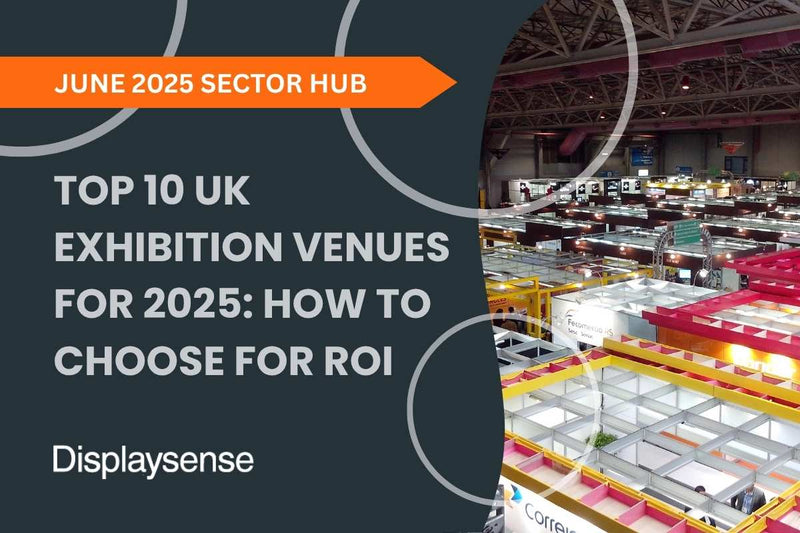15 Superb Shop Design Ideas

15 Superb Shop Design Ideas
Your shop design plays a big part in how many customers you attract, retain, and eventually get a purchase out of. You should be aware of who your target market is, what your competitors are doing, and the psychological methods that will transform interest in your business into sales. We understand that designing a shop can be a daunting task, especially if you're unsure where to start or lacking inspiration. That's why we've curated a collection of ideas that cater to different industries, store sizes, and budgets. Whether you're opening a new store, revamping an existing one, or simply seeking inspiration for a mini makeover, we've got you covered.
Styles
1. Minimalistic
In a world where less is more, a minimalistic shop design can take centre stage. With its emphasis on clean lines, simplicity, and functionality, this design approach creates an elegant and uncluttered shopping environment. A minimalistic aesthetic can elevate your shop, allowing your products to shine and providing customers with a sense of calm and focus. From sleek display fixtures to a neutral colour palette and strategic use of negative space, the power of minimalism can be used to create a visually stunning backdrop that not only showcases your merchandise but also fosters a memorable and immersive shopping experience. Perfect for: Boutiques and spas
2. Bright & Vibrant
A shop designed with a bold and vibrant aesthetic can spark joy and capture the attention of every passerby. Walls painted in vibrant hues, pops of colour throughout, and dynamic lighting create an electrifying atmosphere. Interactive displays beckon customers to touch and explore, while artistic installations evoke a sense of wonder. Creative signage adds a playful touch, while cosy corners invite shoppers to relax and immerse themselves in the vibrant ambience. You should ensure that this still fits in with your branding and doesn’t become overbearing for the customer. Perfect for: Salons and toy stores
3. Vintage
Embracing the charm of yesteryears, this design idea combines elements like antique furniture, retro signage, and vintage props to create a captivating atmosphere. Soft, warm lighting bathes the space, enhancing the cosy ambience. Thoughtfully curated displays showcase unique, one-of-a-kind treasures, enticing customers to explore further. A mix of textures and patterns adds depth and visual interest, while a carefully chosen colour palette evokes a sense of timeless elegance. From the moment they enter, customers are enveloped in an enchanting experience that celebrates the beauty of the past. Perfect for: Barbers and bars
4. Technology
Interactive displays are a powerful tool to captivate customers and immerse them in what your shop has to offer. This can be used to allow customers to shop, check stock, or create their designs through a touchscreen device. These experiences foster a sense of connection between customers and your products, allowing them to make more informed purchasing decisions while enjoying a memorable and enjoyable shopping experience. Interactive displays not only create excitement but also establish your shop as a destination where customers can actively participate in the exploration of your offerings. Perfect for: Catalogue retailers and fast food
5. Themed
You can get creative here, captivating customers by designing a shop with a theme in mind to immerse them in a unique and enthralling shopping experience. The theme you pick could be related to what you sell, where you’re located, or to fit the brand identity. One example could be to create a beach theme in a boutique store that’s potentially by the coast. Fill the walls with seashells and artwork from the beach, have a soothing blue and neutral colour palette, and even turn the changing rooms into beach huts. Perfect for: Any
In Store
6. Store Layout
The layout of your store plays a crucial role in bringing it to life and ensuring your business is successful. An open and intuitive floor plan allows customers to navigate the space effortlessly, ensuring a seamless shopping experience. Strategic placement of displays and shelving creates flow and highlights key products or themed areas. Utilising versatile spaces for interactive displays, cosy corners, or technology integration enhances customer engagement. Attention to lighting and signage draws attention to specific areas or products, while creative window displays captivate passersby. At the end of the day, you have to work with what you’ve got, and every business will have a different store size at their disposal but it’s vital that you get it right.
7. Shelving
Shelving plays a crucial role in shop design, impacting both functionality and aesthetics. To complement the overall theme of your shop, consider unique shelving options that add visual interest and enhance product display. Floating shelves provide a sleek and modern look, whilst ladder displays create a rustic and eclectic vibe. Modular units offer flexibility, allowing you to adapt your display to changing needs. Incorporate different materials like wood, metal, or glass to add texture and variety. Consider open shelving for a minimalist approach, or closed cabinets for a more organised and clutter-free look. With well-thought-out shelving choices, you can showcase your products effectively and create an engaging shopping experience.
8. More Than a Store
This involves thinking outside the box, offering extra value for your customers to visit your establishment. This can be through free samples, an informative talk, or any other way to build positive relationships with your customers. A really clever idea by activewear clothing company Lululemon is that they hold free yoga classes within their store. This gets people talking about them as well as attracts new customers to their store. If you are thinking about doing something like this, talks, or events, you need to make sure you have adequate space for it.
9. Impulse Purchases
Impulse purchases play a significant role in shop design. By strategically placing enticing products, utilising eye-catching displays, and creating a sense of urgency, businesses can tap into customers' spontaneous buying behaviour. Cleverly designed layouts, such as placing impulse items near the checkout counter or in high-traffic areas, can increase the likelihood of impulsive purchases. Visual cues, appealing packaging, and limited time offers further fuel these spur-of-the-moment decisions. However, it's essential for businesses to strike a balance between encouraging impulse buys and maintaining an authentic and customer-centric experience.
10. Comfort
When it comes to designing a shop, comfort should never be overlooked. Customers should feel at ease and relaxed as they navigate your space. Incorporating comfortable seating areas, soft lighting, and ergonomic furniture can provide a respite for weary shoppers, encouraging them to stay longer and explore further. Thoughtful layout planning that allows for easy navigation and ample space between displays ensures a stress-free experience. Moreover, considering temperature control and proper ventilation maintains a pleasant atmosphere.
Front of store
11. Window Displays
The window is where you want to highlight some of your most popular, eye-catching, or visually pleasing products, grabbing the attention of passers-by. Think of it as a first introduction for you towards a wide pool of potential customers, and it could be the decider as to whether they are interested in you or not. You should try to make this align with the rest of the business, ensuring you’re creating a consistent and memorable brand. Using mannequins, signage, and acrylic risers is an excellent way of displaying your products and helping them take centre stage.
12. Signage
Considered to be the most important kind of signage in retail, the exterior of your shop is what will often bring customers through the door. Customers will be put off by peeling paint, flickering bulbs or any other deficiencies that your signage may have, so it is wise to invest in this and ensure it is in pristine condition. The front of store logo is one of the most important pieces of signage you can get for your business, and it will be pivotal in whether your brand will be remembered or forgotten. Other types of signage here will include menus, upcoming events, and advertising promotions; however, you want to keep this relatively minimal and ensure it looks attractive.
13. Awning
Awnings are a powerful design element that can greatly enhance the overall appeal and functionality of your shop. These overhead coverings not only provide protection from the elements but also add a touch of style and character to your storefront. Awnings can be customised to complement your shop's design aesthetic, whether it's a vibrant splash of colour to catch attention or a sleek and minimalistic design for a sophisticated look. They create an inviting entrance and can be used to showcase your brand name or logo, reinforcing your identity. Awnings also offer additional space for creative displays or outdoor seating, allowing customers to engage with your products in a unique and comfortable setting.
14. Tasters
Don't underestimate the power of tasters for your storefront. These enticing glimpses of what awaits inside can capture the attention of potential customers and draw them in. Consider creating a tantalising display that showcases a selection of your most appealing products or highlights your unique offerings. Whether it's a beautifully arranged sample table, a captivating window display, or an interactive demonstration, tasters provide a sneak peek of the shopping experience that awaits. They pique curiosity, create intrigue, and leave a lasting impression, enticing passersby to step inside and explore all that your shop has to offer.
15. Your Style
You should treat your storefront as if it is a front cover and your store is the actual book. It’s all about showing off who you are as a business and grabbing the attention of as many people as possible. You should incorporate elements that reflect your brand's identity, such as the use of specific colours, patterns, and materials that align with your logo or overall aesthetic. Whether it's a vintage-inspired boutique or a modern tech store, the storefront should serve as a visual representation of your business's personality. From custom signage that showcases your logo to window displays that tell your brand's story, every detail should contribute to creating a cohesive and captivating visual experience that entices customers and reinforces your business's distinct style.
Conclusion
In conclusion, designing your shop with careful consideration and attention to detail can greatly impact your success in attracting and retaining customers. By incorporating the right style, layout, and front-of-store elements, you can create a shopping environment that appeals to your target market and reflects your business's unique personality. With almost every store offering different products or services and targeting a unique target audience, it’s important that you make your shop design work for you and attract the most customers possible.
Related articles: How To Put Together The Perfect Shop Floor Plan



